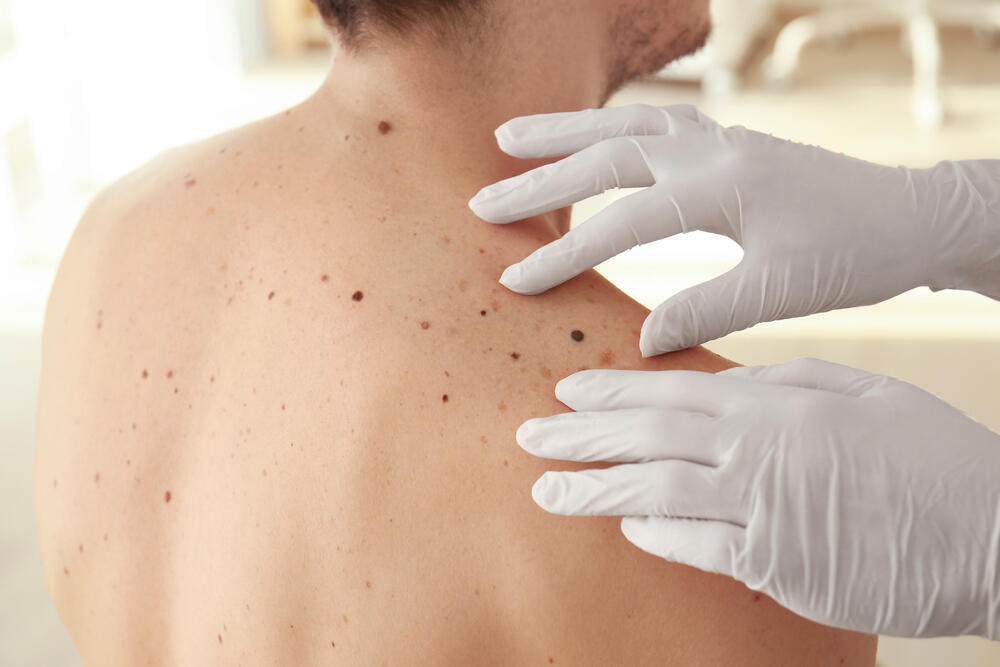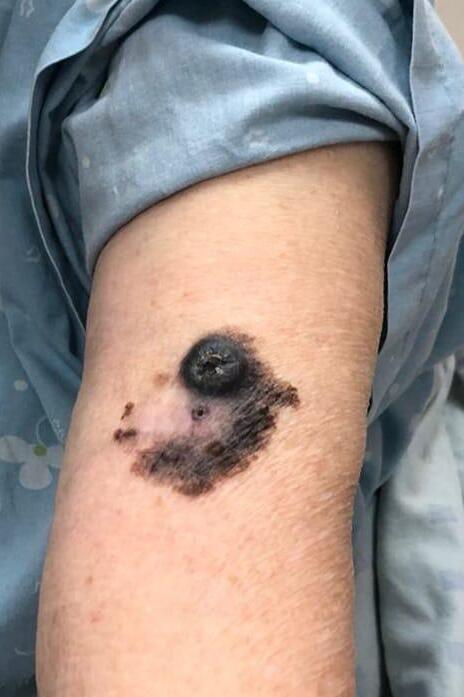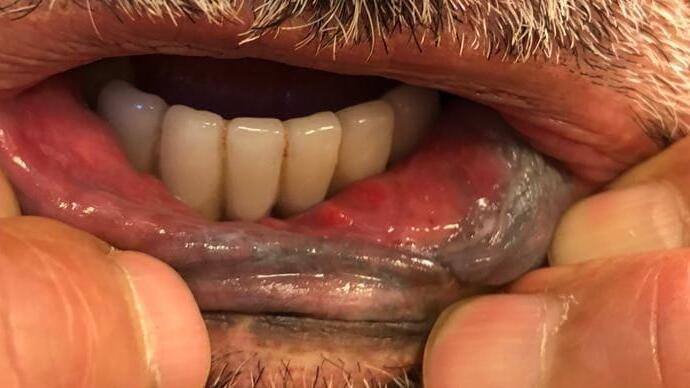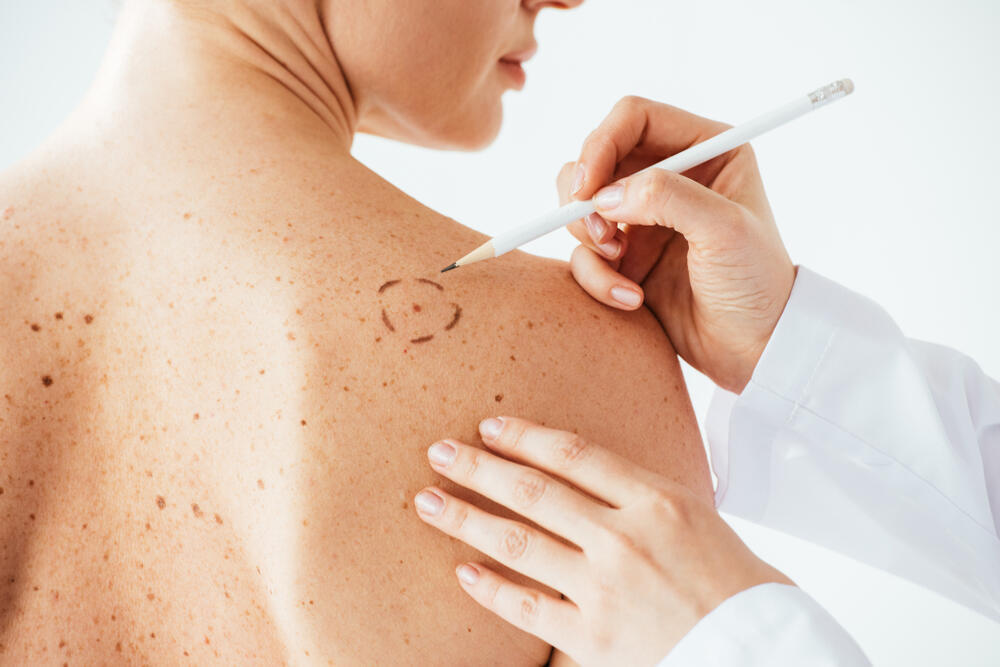Skin cancer can manifest as more than just melanoma, as other types of skin tumors also exist. The two main kinds are basal cell carcinoma and squamous cell carcinoma.
Related Stories:
The most significant risk factor for skin cancer is chronic exposure to sunlight, so these growths usually appear in areas such as the head, neck, upper back, shoulders and legs, which are more exposed to the sun.
Most cases are diagnosed early and treated with relatively simple surgery, but in a small percentage of cases aggressive growths can occur that can cause significant physical and psychological damage.
Nevertheless, melanoma is a common form of skin cancer that needs to be recognized, alongside the risks and dangers associated with it. It’s essential to be familiar with ways to prevent it and treatment options for it.
Melanoma is a growth that originates from melanocytes, the cells that produce the dark pigment in the skin and give it color. Their production increases with sun exposure, causing the skin to darken.
In Israel, about 1,800 new cases are diagnosed each year, with most of them being localized and superficial and treated surgically. However, there are also cases of regional or metastatic disease. Sun exposure is a risk factor for developing melanoma, mainly due to exposure to high amounts of sun radiation.
Melanocytes are present throughout the skin, including in hidden areas such as skin folds, beneath hair and nails, inside the mouth, or other internal areas of the body. Cosmetologists and barbers can sometimes identify suspicious lesions and advise seeking medical attention for them.
Risk factors for melanoma include:
- Multiple pigmented lesions (beauty marks).
- Light skin, eyes and hair color.
- Personal or family history of melanoma.
- Age (although melanoma can occur in young individuals, it is more common in adults).
- Sun exposure, in particular to high doses of radiation.
It is important to be aware that 90% of the damage that can lead to the development of melanoma likely occurs by the age of 25. Therefore, special emphasis should be placed on preventive measures among children, adolescents and young adults.
What can you do?
Be "sun smart": Avoid sun exposure without proper protection, wear a wide-brimmed hat, avoid staying in the sun during hours when radiation is high, and use a sunscreen that filters both UVA and UVB radiation.
Be aware: Pay attention to any changes or abnormalities on your skin. A mole that looks different from others, changes in size or shape, should be examined.
See a doctor: Seek medical attention for any mole or skin lesion that bothers you.
Individuals with a personal or family history of melanoma, multiple moles or other high-risk factors should undergo regular check-ups, be monitored and follow guidelines against the disease.
The earlier melanoma is diagnosed, the higher the individual’s chance to make a full recovery and avoid metastatic disease.
Early identification is significant for any cancerous growth, but it’s particularly important for melanoma because it can potentially become very aggressive. A 5 mm cancerous growth in the colon, lung, breast or prostate is considered small and has a low level of risk. However, melanoma that penetrates the skin to a depth of 5 mm is considered high-risk.
The primary risk from melanoma isn’t derived from its size on the skin, but rather from its depth of penetration. The deeper the melanoma, the higher the risk of spreading to the lymph nodes or other organs.
A mole’s appearance to the naked eye doesn’t necessarily indicate its depth. After identifying a suspicious growth, it’s surgically removed in a procedure called a biopsy, and the final diagnosis is determined by inspecting it under a microscope.
4 View gallery


A mole that looks different from others, changes in size or shape, should be examined
(Photo: Shutterstock)
Every millimeter of the melanoma’s depth increases the risk of it extending and reaching other organs by at least 10%. Therefore, early diagnosis is very important.
Protect yourself with sunscreen
The term SPF stands for Sun Protection Factor, which refers to the level of protection provided by sunscreen compared to unprotected skin.
SPF doesn’t indicate the amount of time one can spend outdoors with the sunscreen, as sun exposure is also influenced by its intensity, one’s skin type, the number of times sunscreen is applied during the day, and other factors.
SPF serves as a basis for comparing the strengths of different sunscreens: the higher the SPF, the higher the level of protection against sun exposure and sunburn.
UVB radiation is the type of radiation that causes sunburn, growth development and skin pigmentation. Ultra Violet A radiation, marked as "UVA," is another type of radiation that causes the mentioned conditions.
The term "PA" refers to protection against UVA radiation. It’s indicated by a plus sign (+), and the more plus signs there are (up to a maximum of four), the higher its protection against UVA radiation.




